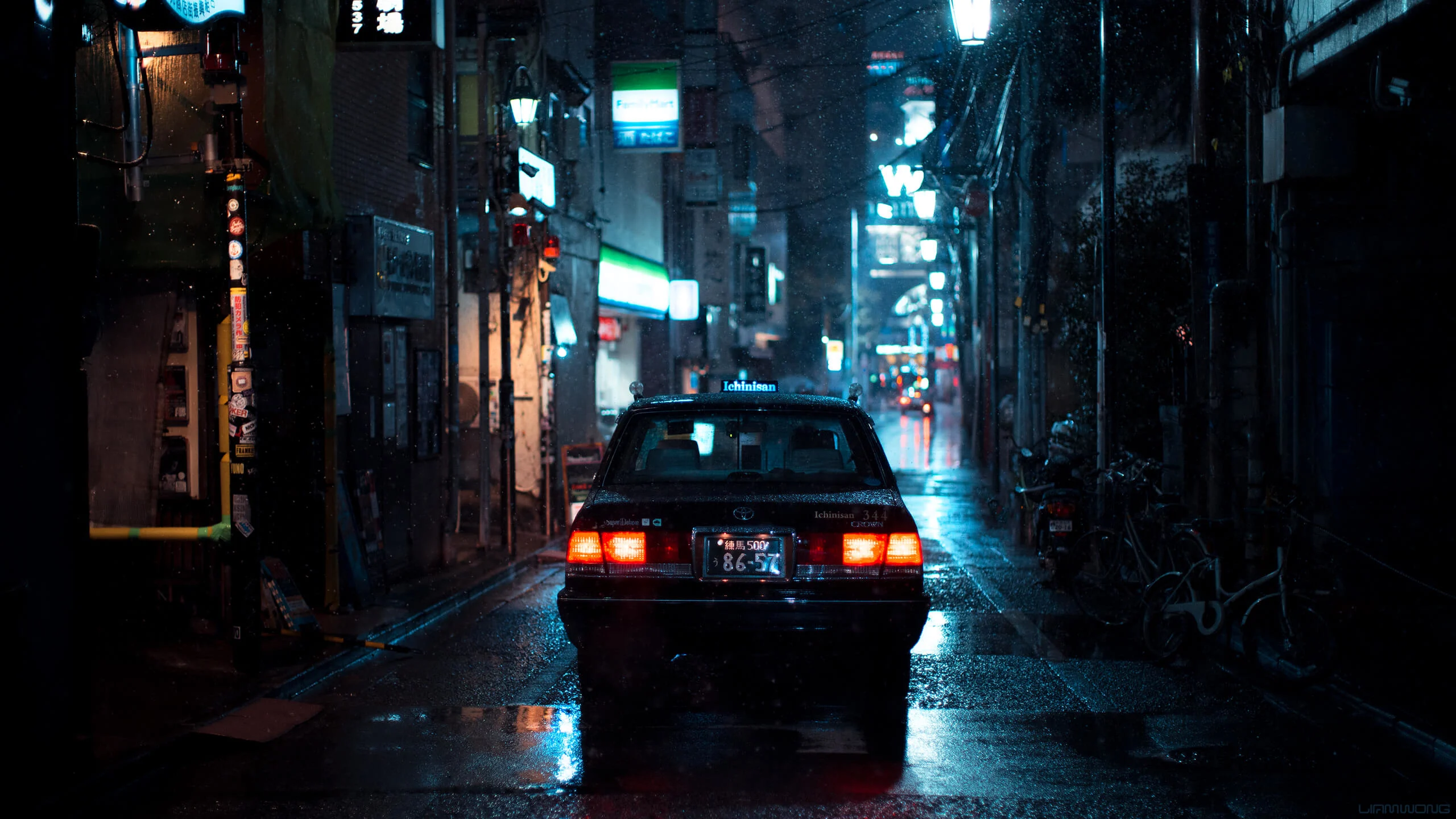
Much of Liam Wong’s photography shines a light on the taxi drivers of Tokyo, an integral but often faceless part of any large city. He captures them going about their nights, looking out of their glass office at the bustling city around them. Liam feels an affinity for them, as he looks through his lens at the city that became his muse a few years ago.
He has spent much of his life working on blockbuster video games, and this has given him an interesting perspective on the parts of life that are worth capturing. Alex Kahl speaks to him about how his two passions connect and overlap.
Having previously only used a camera to take holiday snaps for most of his life, Scottish photographer Liam Wong still remembers the story of the first image he took with a serious view to pursuing it as more than a hobby. “I never planned to become a photographer, but this photo took me on a journey to become one,” he says.

Taken at midnight in Tokyo’s red light district, the image shows a taxi driver waiting in the rain for a couple to exit a love hotel. The driver looks tired and drained as he waits patiently, looking out at the couple, slightly out of shot, as they emerge. The light from the opening hotel door illuminates the patterned upholstery inside the car, and the glow highlights the driver’s face, making this silent worker the focus of the image. This was the start of a long relationship Liam would have with taxi drivers through his lens. “With this image I realised that after midnight, time and people move differently,” he says. “For the first time I felt I had captured a ‘moment' – as if it was a still from a movie, or a cutscene.”
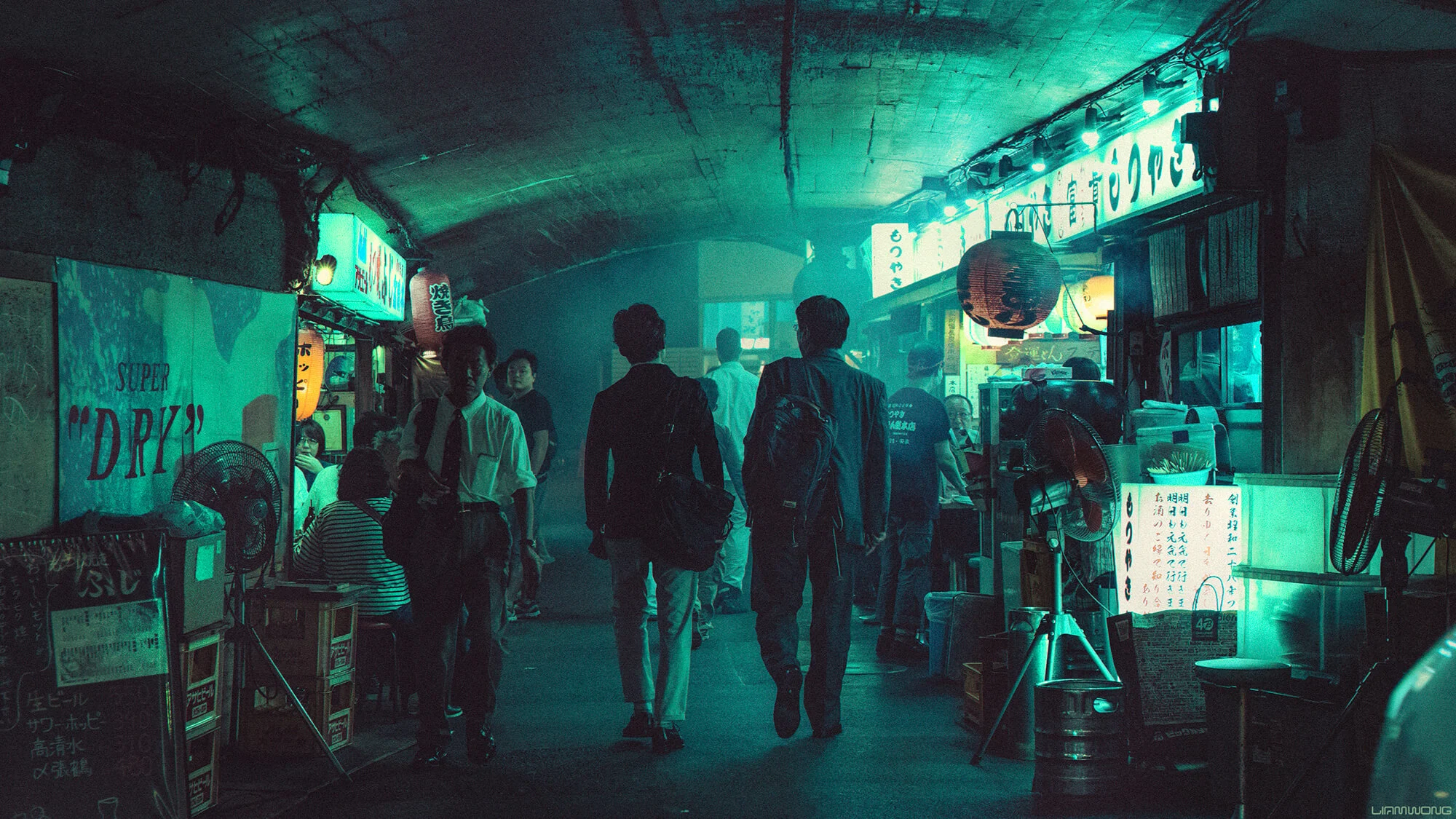
It’s no surprise Liam has a heightened awareness of these visually arresting moments, given that he’s spent much of his life in the games industry. He grew up in Edinburgh, Scotland, a short walk from Rockstar North, the company who developed the Grand Theft Auto games. Playing video games are amongst his earliest memories of childhood. They were the channel through which he learned about creativity, sparking his interest in the way things are made. He tried his hand at programming, but he soon realized it was too complex a job for him, and shifted focus towards the more creative side of the industry, making his first game at the end of university. A moment that, in retrospect, he calls “crystalizing.”
Within two years of graduating, Liam had moved to Canada to become the youngest director at Ubisoft, and was working as an art director on the renowned Far Cry games. At Ubisoft Liam was afforded opportunities to travel, having rarely left the UK beforehand. “That’s how I fell in love with photography. Suddenly I was seeing new places,” he says.

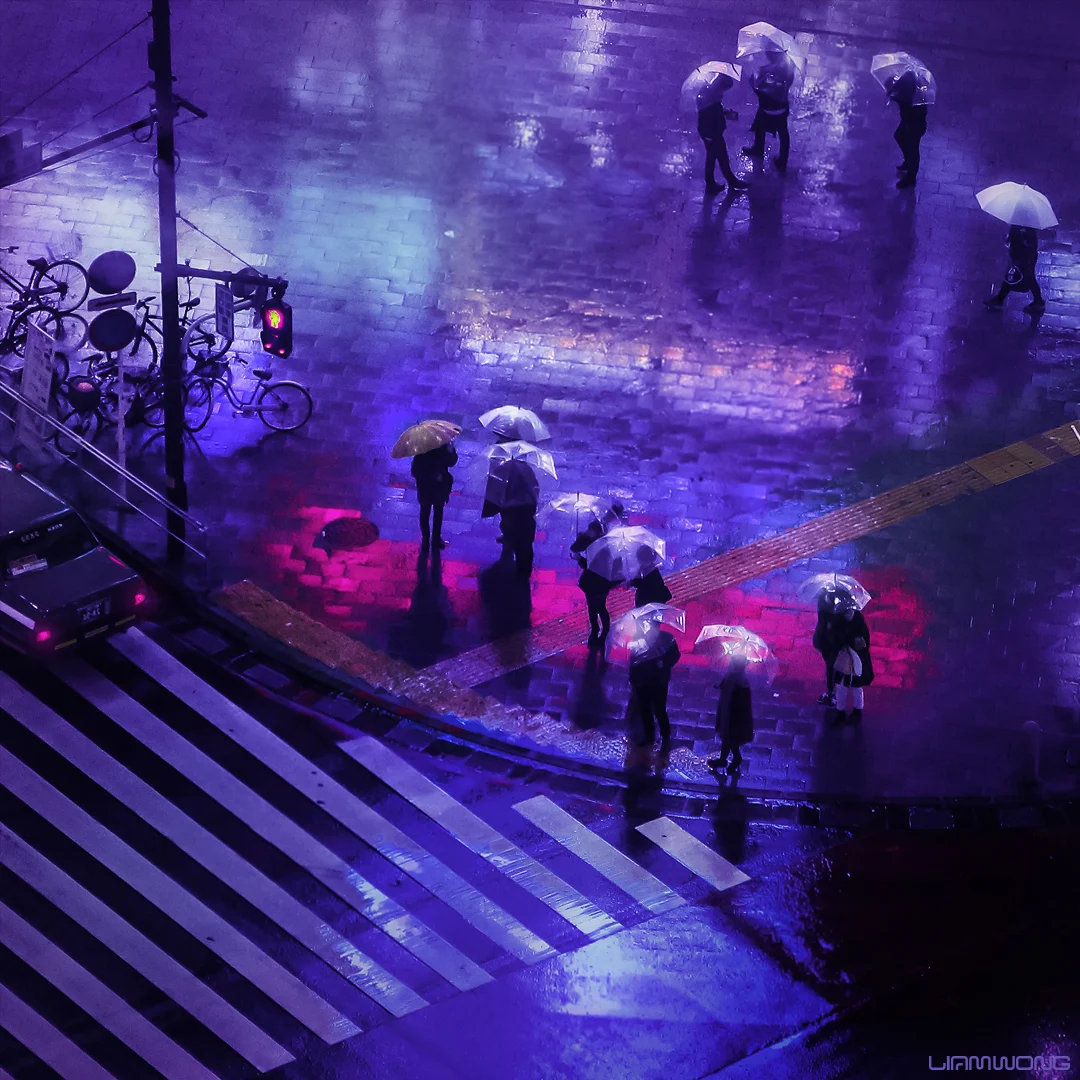
He likes how cities had the ability to pull his senses in different directions, something that was particularly acute when he visited his now-primary muse: Tokyo. At a glance, his portfolio looks like a moodboard created from scenes in a video game, as the way he plays with composition and lighting makes every shot look like a mid-mission cutscene. Couples walk together down narrow alleyways, dwarfed by the surrounding buildings and the swathes of neon signs. Commuters stand on street corners, their faces shrouded by umbrellas, the bright lights of the city above them reflected in the puddles at their feet.
Faceless strangers going about their lives in such a bright, overwhelming city are a running theme in Liam’s images. These photos depict fairly mundane scenes, but it’s a heightened normality, just like a film will show simple day-to-day life in a cinematic way. “A large part of the enjoyment for me comes from playing with light and color to convey mood,” Liam says. “Introducing artificial lights into a scene or manipulating colors in post-production. I study references in film and usually have a specific look I am going for.” It is no surprise to hear Liam refer to films such as Bladerunner as a huge source of inspiration.



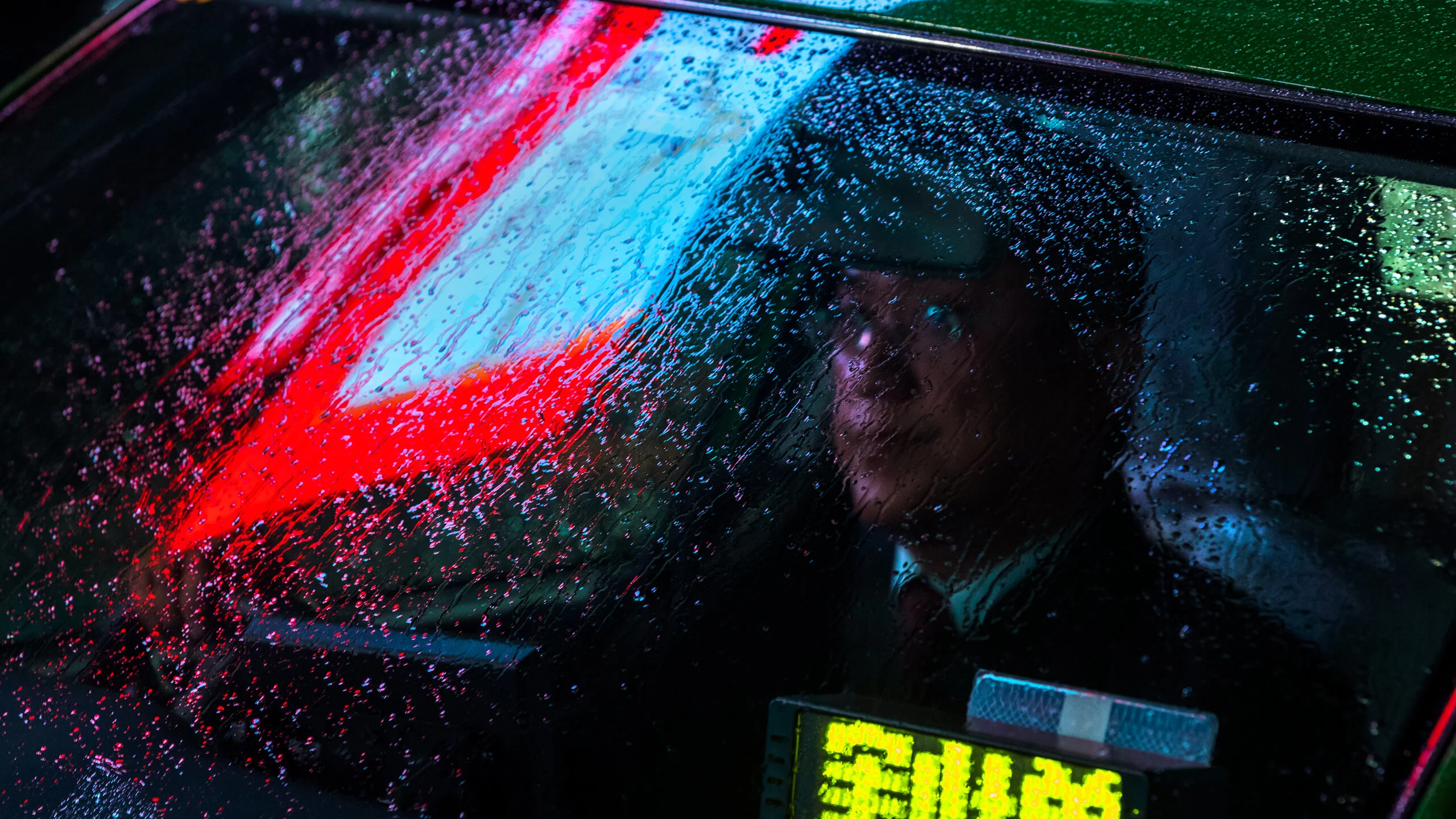


Some of Liam’s most captivating photos show taxi drivers sitting at the wheel of their cars. He’s felt an affinity to them ever since that first photo he took outside the love hotel, and on his recent travels he’s been using text to speech to have conversations with them that might previously have been lost in translation. Liam has been fascinated by them ever since one guessed that he was a photographer as soon as he got in the car. This interaction speaks to the reason Liam is so fascinated by the drivers, as they ferry passengers from A to B, quietly perceiving and making assumptions about their lives.
Most of these shots can be found in his series Midnight Drive. These images take a closer look at the people who probably spend more time in their cars than in their homes. More than 35,000 drivers work in Tokyo, and Liam gives a face to this slightly overlooked workforce. He points his camera inside their fishbowl, the lights of the city reflected in their rain-splattered windscreens. Some stare straight into the camera, their mouths covered by dust masks. Others look out longingly at the bustling world on the other side of the glass.
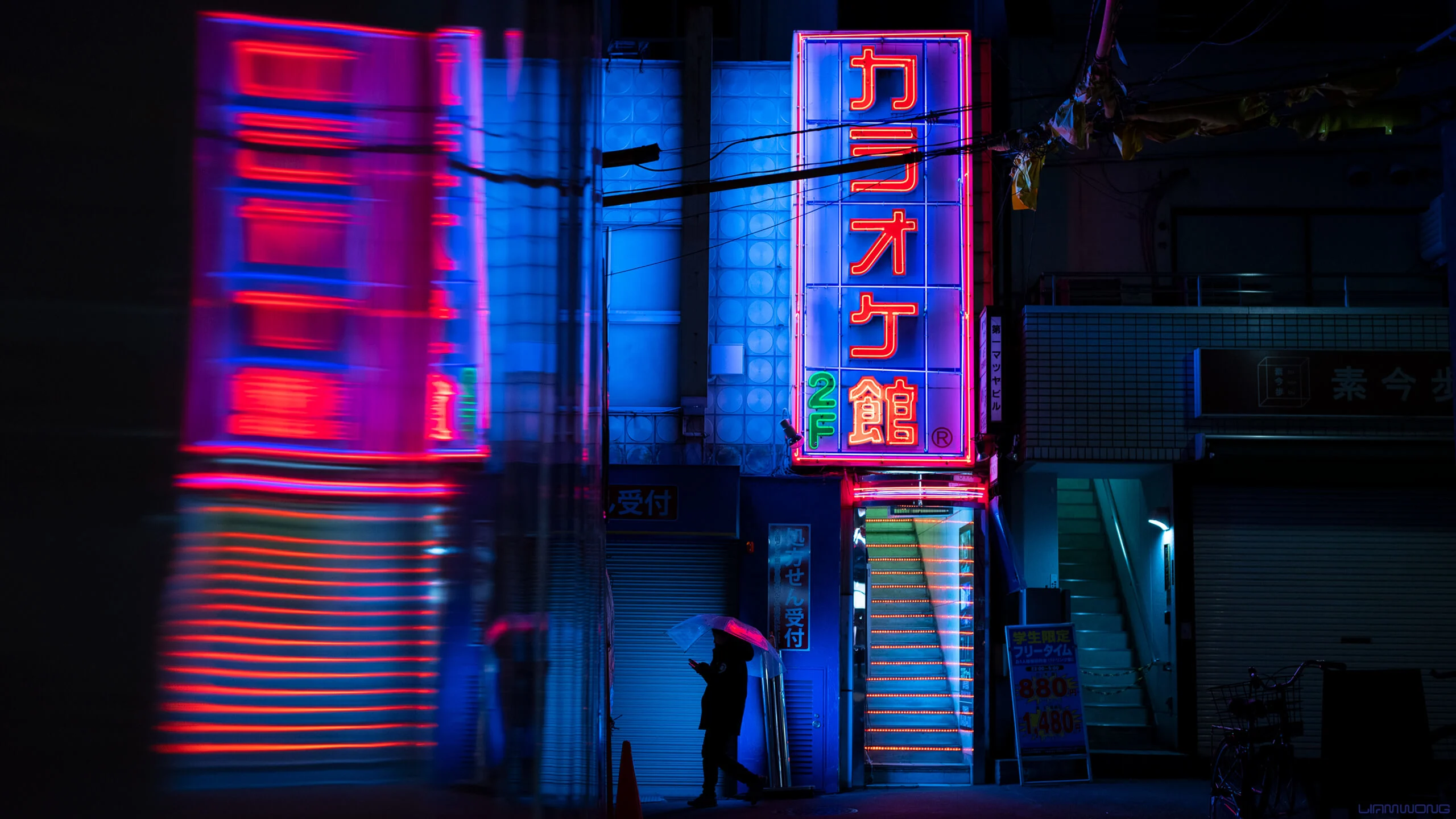

“Video games have definitely shaped the way I view the world through a lens,” he says. “Whilst working on Far Cry a core pillar of the game was that ‘reality is far stranger than fiction,’ the idea that what is right in front of us: the places, the people and their stories are just as potent, bizarre and interesting as things we can imagine… With photography I had this feeling that everything had to be displayed ‘as is’ and true to the image. The moment I began to see photography as art and as a way to express myself was when it became interesting capturing real moments and turning them into the surreal.”
Liam’s photos have now been compiled into his first book, TO:KY:OO, described by himself as “a photographic, cyberpunk-inspired exploration of nocturnal Tokyo.” Bladerunner’s Syd Mead’s and games designer Hideo Kojima have both contributed words to TO:KY:OO. “In his photos, you can feel what cannot normally be seen, layered structures of evolutions and decadence of the cities, the atmosphere of the people who had lived and died there,” Kojima writes. “A single ‘photo’ holds a balanced harmony of beauty and the disordered.”
